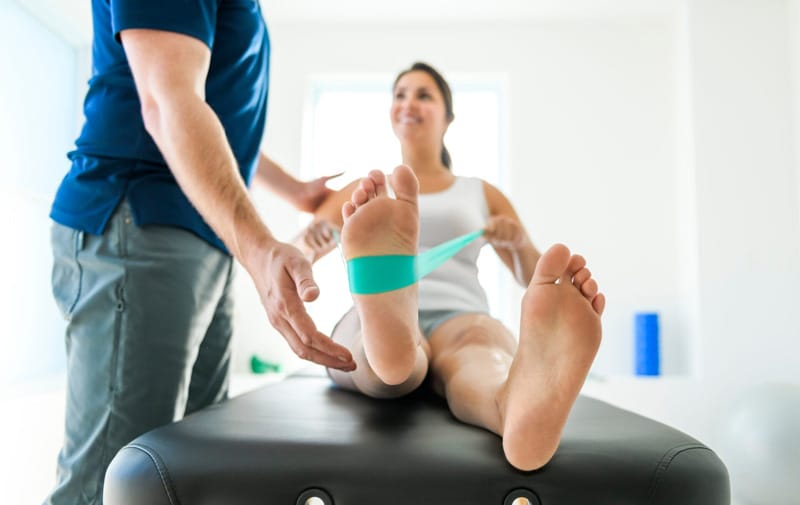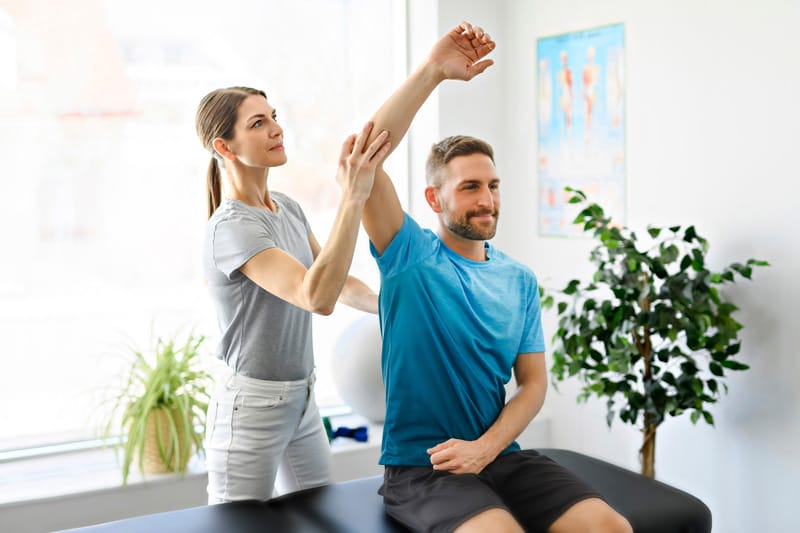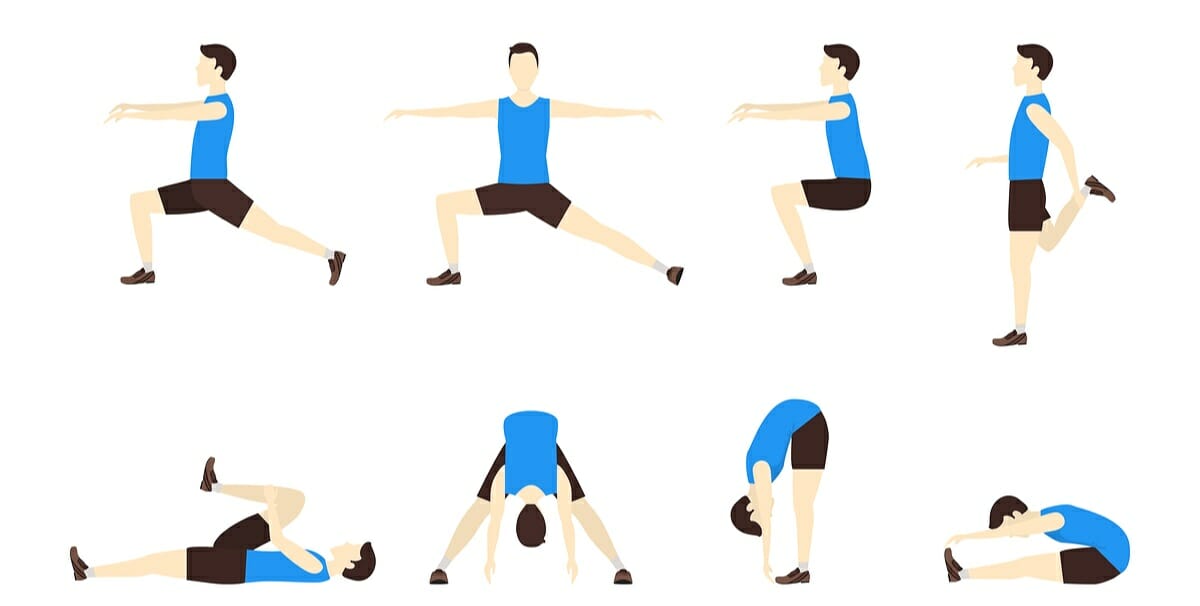
Why Stretch Therapy
Improve your mobility and relieve your pain with fascial stretch therapy at PhysioDNA. Fascial stretch therapy (FST) is a type of stretching technique that targets the body’s fascia, which is the connective tissue that surrounds muscles, bones, and organs. At PhysioDNA, our fascial stretch therapists can help to increase your flexibility, range of motion, and performance while reducing pain and tension. By addressing restrictions in the fascia, FST takes a broader approach by targeting the fascial lines that connect everything in the body, rather than only focusing on an isolated body part in traditional stretching.
Fascial stretch therapy typically involves a combination of passive and active stretching, and uses circulatory, gently oscillating movements of traction and stabilization to decompress joints and expand space in the soft tissues. FST uses gentle, sustained movements and pressure to release fascial tension – making it a safe and comfortable treatment modality for a wide range of individuals.
Fascial Stretch Therapy at PhysioDNA
At PhysioDNA we pride ourselves on having several of our therapists certified in Fascial Stretch Therapy (at the highest level).Our therapists have combined thousands of hours of stretching with a variety of groups of patients, from young adults to older individuals, as well as all levels of athletes. Our team is highly skilled in stretching techniques and the proof is in how great the patient feels when they are done with the session. We have seen and patients have described huge improvements and benefits in even just one session of Fascial Stretch Therapy with our experienced team.
How can FST help?
- Decrease pain: as many musculoskeletal injuries may be a result of muscle tightness and joint stiffness, FST can help you better recover from an acute or chronic injury.
- Improve range of motion: decreasing fascial tension may increase the flexibility of your joints and allow you to have more freedom of movement.
- Improve kinesthesia: FST can improve your ability to move with ease – which you may notice during your physical activities or your everyday life
- Improve proprioception: FST can improve your body’s sense of its position in space at rest and during movement.
- Improve posture: better kinesthesia and proprioception may in turn improve your ability to correct your posture.
- Enhance performance: decreased tightness and better freedom of movement can translate into performing better in your sports and everyday activities.

FST can be helpful for a wide range of individuals including athletes of all levels, those with acute or chronic pain, those recovering from injuries, or simply anyone looking to improve their flexibility and mobility. FST is often used in combination with other therapies such as physiotherapy, massage, chiropractic, and osteopathy.

What does a FST session look like? Our experienced fascial stretch therapists will:
- Conduct a comprehensive assessment to identify areas of fascial tension
- Develop an individualized therapy plan tailored to your goals and problem areas
- Guide you through specific gentle, assisted stretches to address fascial restrictions
- Educate you on specific movements or stretches to work on at home to maintain your flexibility and new ranges of motion.
Experience the difference FST can make and schedule an appointment with one of our trained fascial stretch therapists today!
Can FST be covered under extended health benefits?
Yes, our therapists work under our Physiotherapy team, Chiropractic or even Registered Massage Therapy. Interested in learning more. Feel free to reach out and we can discuss options that fit your needs.
How often do I need to come in for FST?
Frequency of treatment depends on the individual, lifestyle of activity and stiffness in the body. If it is your first session we do recommend having a 60 minute session as the initial session. This allows the therapist to assess and treat the whole body in the first session and get an idea of how the body is moving and where some of the restrictions are in the body that may be leading to stiffness, pain, decreased performance in sport or exercise.
What if I have an injury, can stretching make my injury worse?
All of our therapists are heavily experienced in the world of rehabilitation and injury. Should there be an underlying injury, this will be assessed in the first session to be taken into consideration with the treatment approach. Depending on the injury stretching may be helpful however if it is not recommended by the therapist, then it will not be done to that area. Communication will be given on options to get direct treatment to the area and direction will be provided on next steps. Typically stretching other areas of the body can continue. At PhysioDNA we do what is in the best interest of the patient.
Related Blogs
FAQs
-
How many Fascial Stretch Therapy sessions are typically needed to see results?
To achieve significant and lasting changes with fascial stretch therapy, it is recommended to do a minimum of three sessions. In spite of this, one can notice gains immediately after a 60-minute session. In order to target multiple areas of the body, a 60-minute session is needed in order to ensure enough time is spent on the needed joints. If the area of focus is a single joint, then a shorter session can always be beneficial; however, we would recommend it.
-
Is Fascial Stretch Therapy safe for individuals recovering from injuries?
Yes, Fascial Stretch Therapy is safe, even for post-injury patients. It is helpful for a number of conditions related to bad posture, injuries and a limited range of motion. We have qualified fascial stretch therapists who help make the therapy efficient and effective by customizing the sessions to suit your body and your goals. Fascial stretch therapy is heavily used at our clinic for post-injury care. Our therapists are experts in physical rehabilitation and the management of injury. If the injury is caused by tight muscles or spasms, then fascial stretch therapy is exactly what is needed in order to recover. Specific injuries such as patellofemoral syndrome, IT band syndrome, piriformis syndrome, mechanical low back pain, tight hip flexors, sacroiliac joint dysfunction, achilles tendonitis, plantar fasciitis, and more can all benefit from fascial stretch therapy.
-
What should I expect during a Fascial Stretch Therapy session at PhysioDNA?
Fascial Stretch Therapy is a gentle yet effective approach that targets specific areas. The techniques used include stretching exercises, myofascial release, and active release techniques. These are administered along with other treatments, including physiotherapy, chiropractic treatment, and osteopathy. Our experts work together to ensure that the most beneficial treatments are being provided.
A session would include a postural scan, range of movement, and passive stretching with the patient on the table. You can wear comfortable clothing that you would not mind moving in or being moved in. The stretching may be slightly uncomfortable; however, it should never be painful.
-
Can Fascial Stretch Therapy help with chronic pain management?
Fascial stretch therapy (FST) focuses on increasing the body’s flexibility, mobility, and mechanical function through the treatment of chronic pain, muscular stiffness, and abnormal movements. By stimulating the body’s circulation and promoting joint movement, pain may decrease as a result, depending on what the cause of the pain may be. Fascial stretch therapy is also great in the prevention of pain and injury, increasing functional range of movement, and helping to optimize performance in sports and everyday life functionality.
-
Do I need to prepare or wear specific clothing for a Fascial Stretch Therapy session?
As a part of your session, your therapist performing fascial stretch therapy will need to assess various postures by changing your position. Wearing loose-fitting clothing or clothing you feel comfortable being moved in would provide more freedom of movement and will result in a more effective and comfortable experience overall.
-
What are the long-term benefits of regular Fascial Stretch Therapy treatments?
Continuing Fascial Stretch Therapy has positive effects on increasing range of motion and flexibility with long-term effects. The stretch technique will result in the remodelling of connective tissue structures and passive muscle strength, which will lead to better flexibility. The goal is to help sustain the improvements in flexibility. Thus, in order for stretching exercises to provide significant benefits, one should do so on a regular basis.



